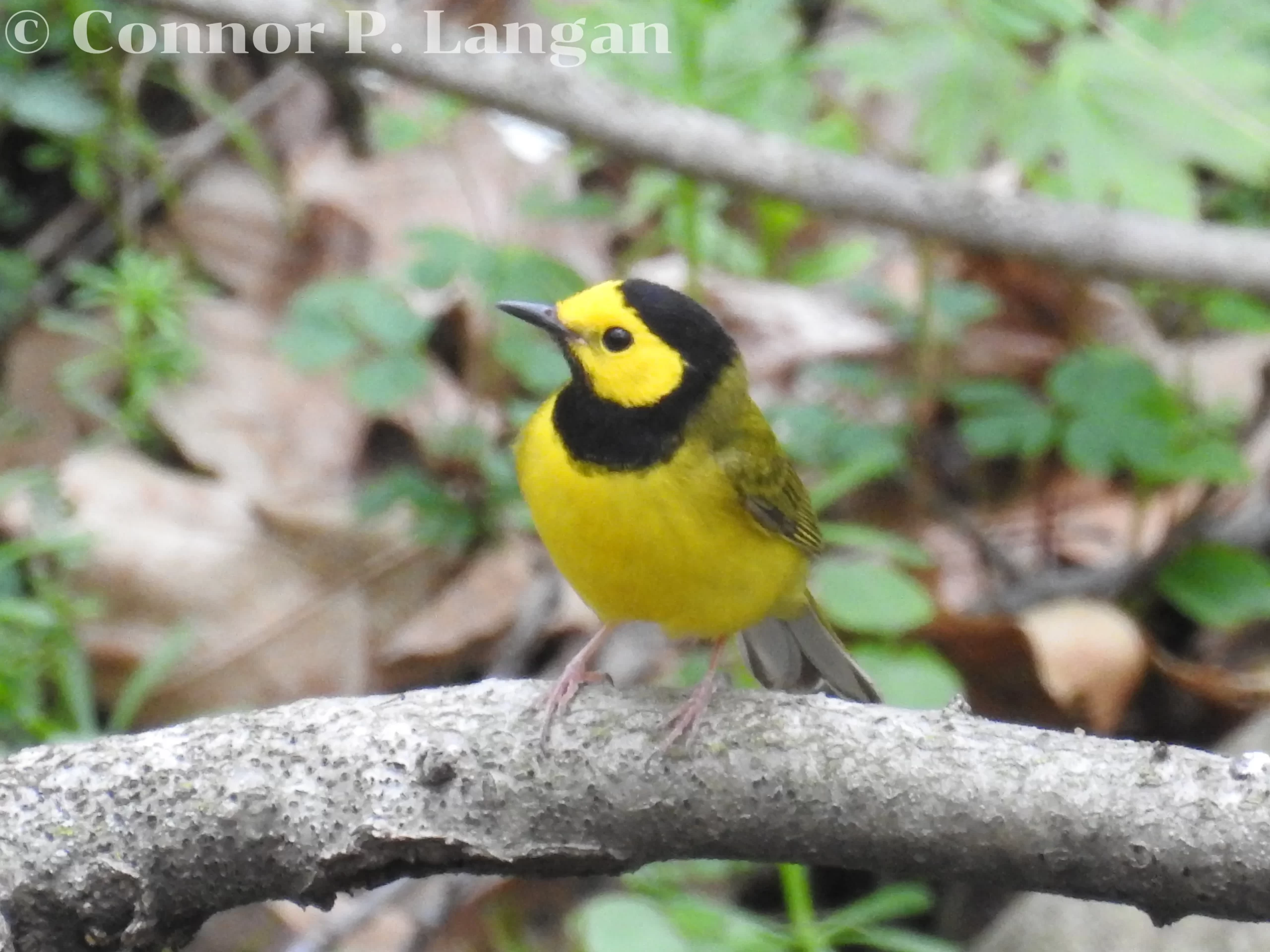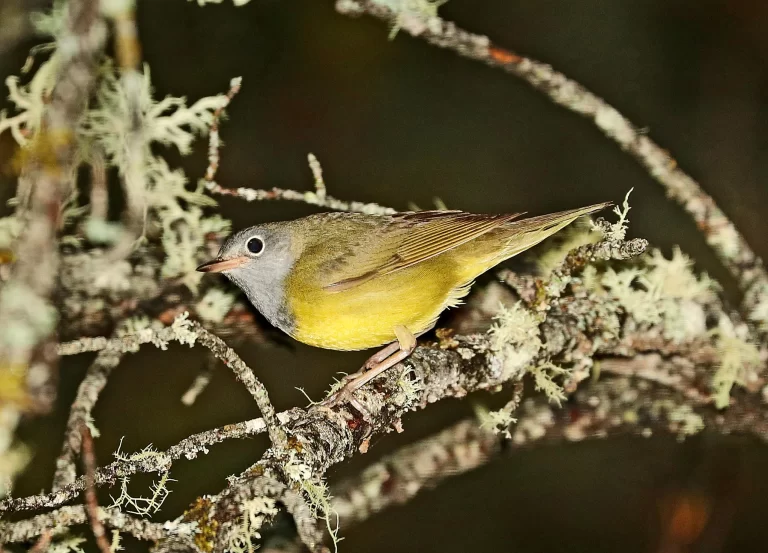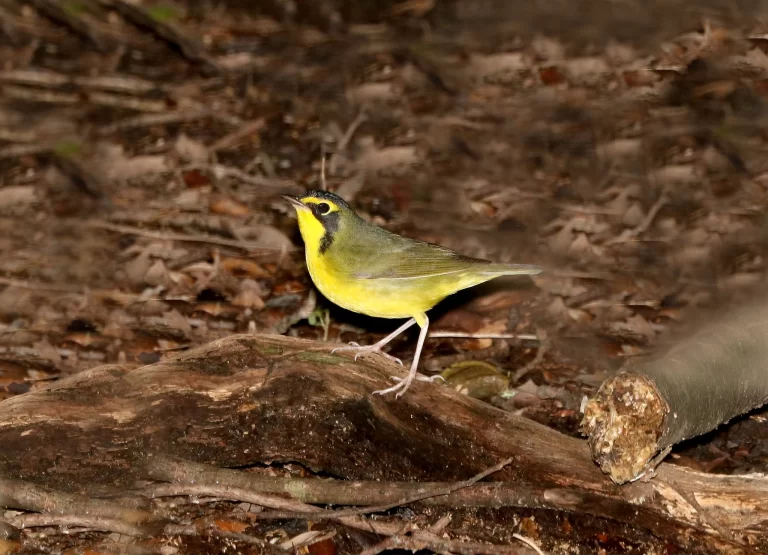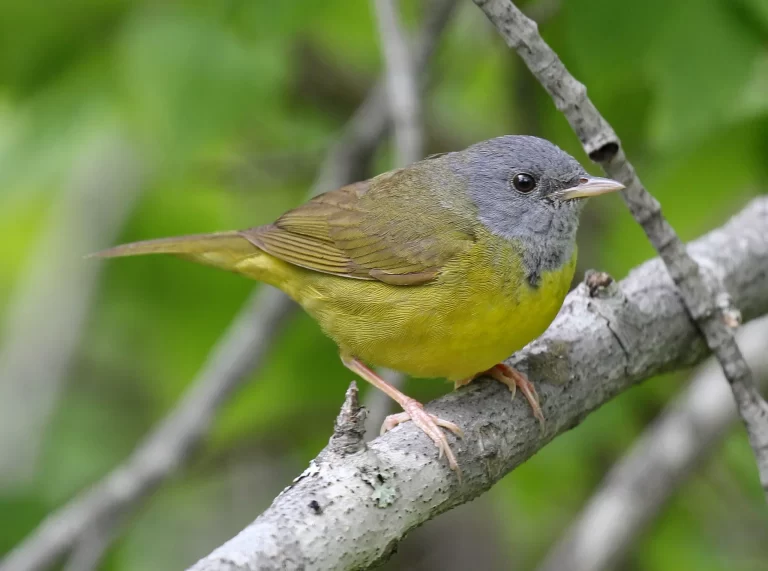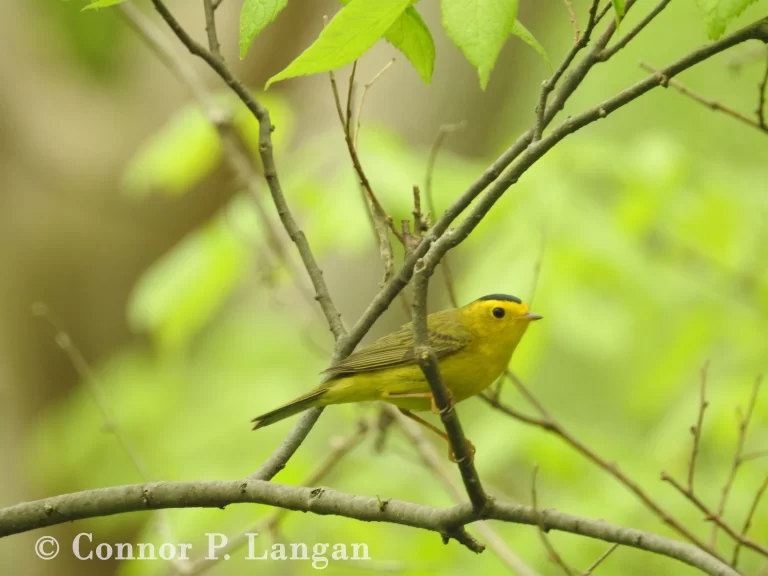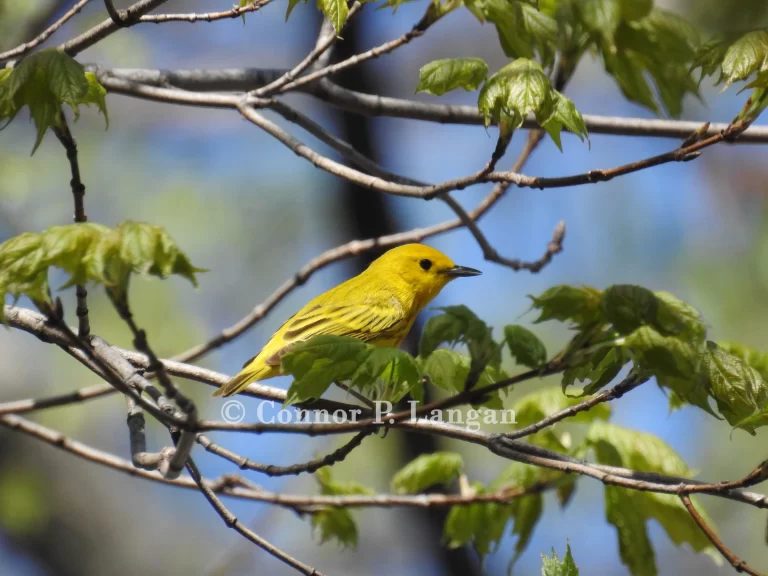Description
Hooded Warblers are large warblers with small beaks and long tails.
Hooded Warblers are just over 5 inches long. These birds weigh 0.3 to 0.4 ounces.
Male Hooded Warblers earned this species their namesake with their black caps that connect to their black throats. Males have yellow faces and dark, beady eyes. These birds are yellow below with green backs, wings, and tails. Hooded Warblers have white outer tail feathers.
Female Hooded Warblers look much like male birds, though they lack the namesake hood. Otherwise, Hooded Warbler females look similar to males. Some females may have a small amount of black on their heads or throats.
Immature birds look much like females.
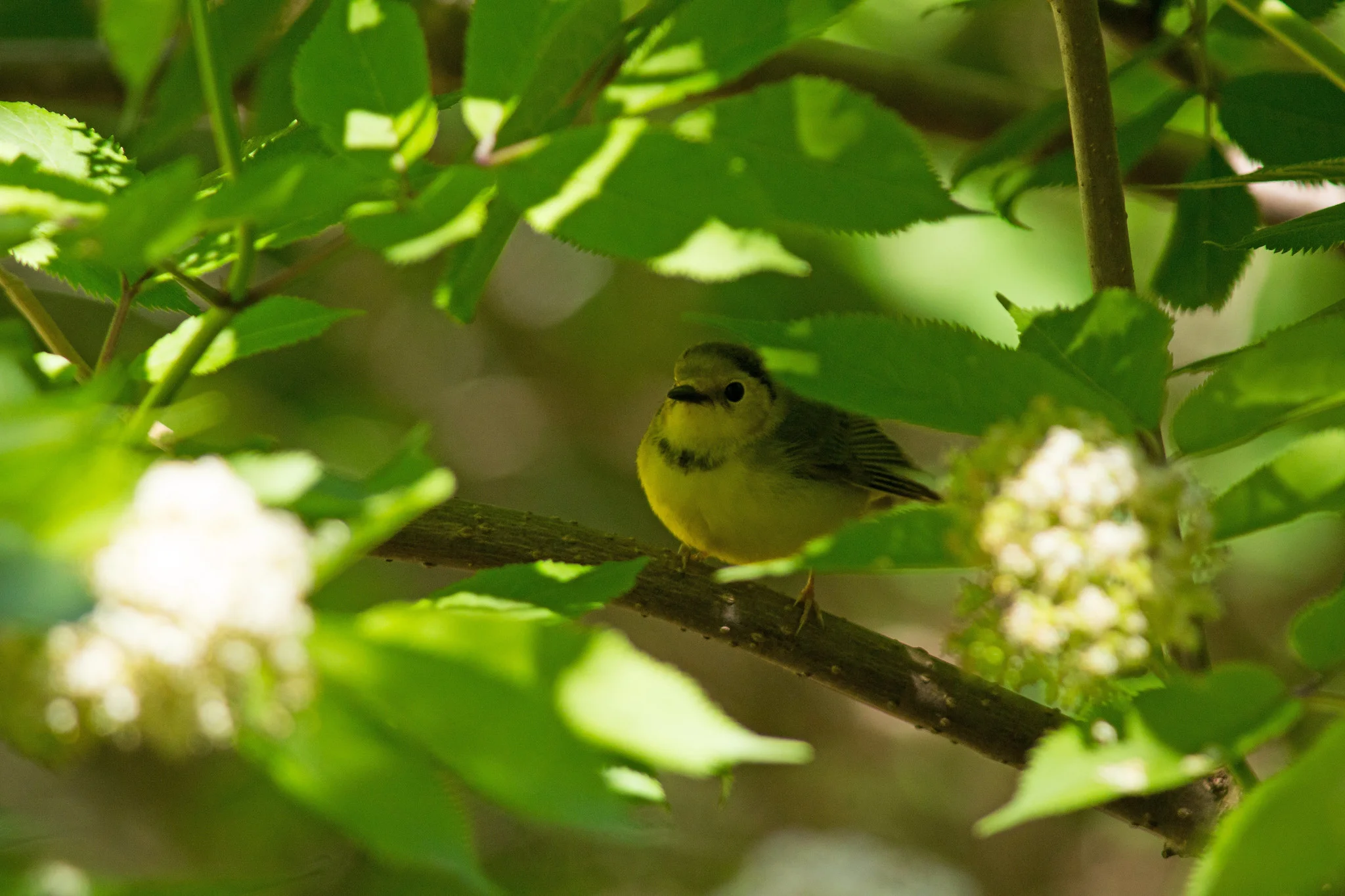
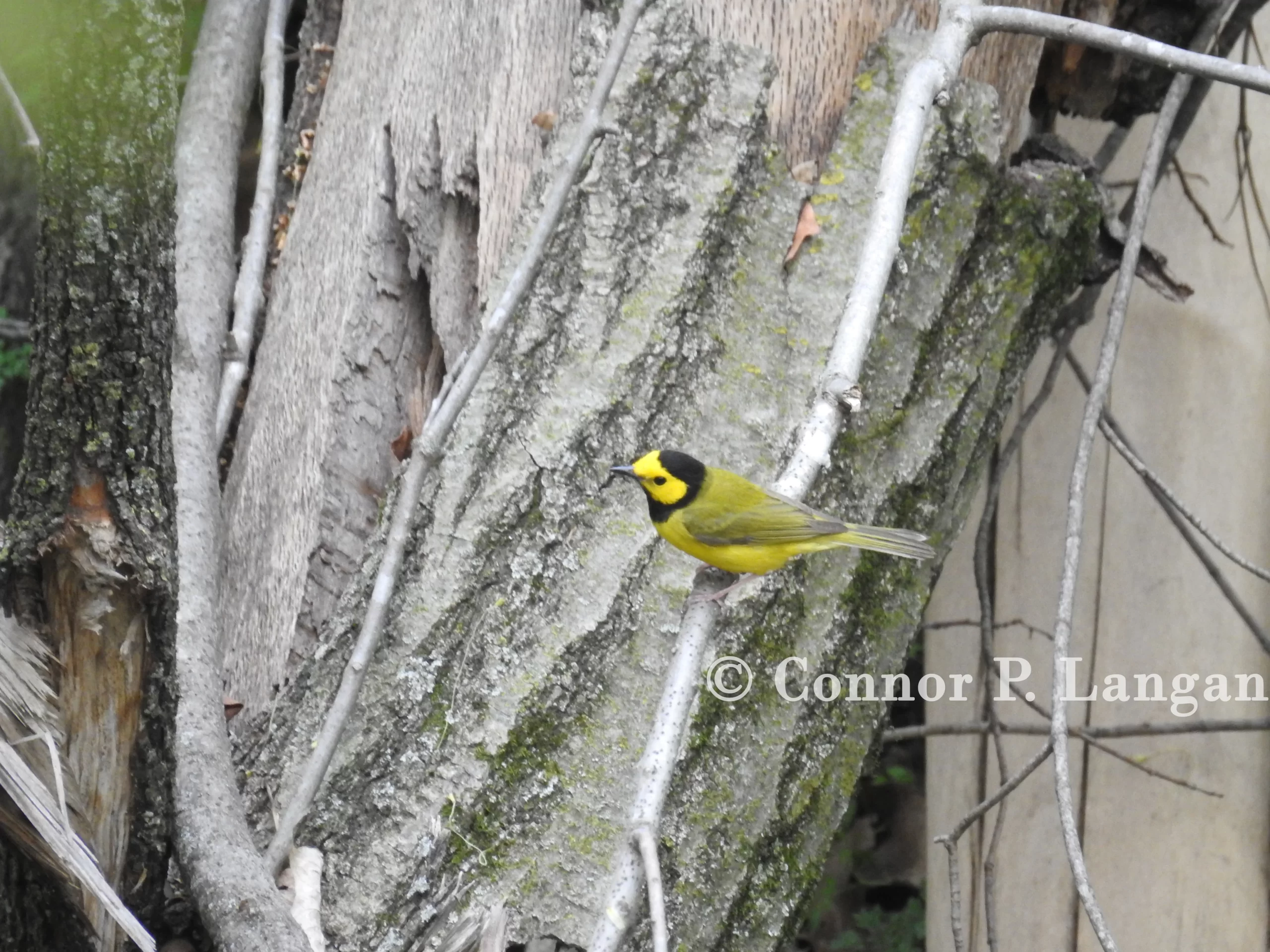
Behavior
Hooded Warblers are fairly independent birds that rarely associate with other birds except for their mate on the breeding grounds. During the breeding season, males establish and defend their breeding territory from other birds.
In the winter, male and female Hooded Warblers establish separate territories and inhabit different habitats.
Hooded Warbler Diet
Hooded Warblers are primarily insectivorous, consuming caterpillars, ants, and other small invertebrates.
Habitat
This species seeks mature woodlands with a shrubby undergrowth for breeding habitat. During the winter, Hooded Warblers can be found in similar habitats, or they may instead spend their time in early successional ecosystems.
Hooded Warblers can show up in a variety of habitats during migration. Look for these birds in forests, parks, woodlots, and cemeteries.
Range
Hooded Warblers breed east of the Great Plains throughout much of the American Southeast, Midwest, and East Coast. This species has been expanding its range northward in the past few decades due in part to a warming climate.
During the winter, Hooded Warblers travel to the Caribbean, Mexico, and Central America.
Breeding
Hooded Warblers are monogamous by nature, but both sexes may pursue extra-pair copulations with nearby Hooded Warblers. Female Hooded Warblers are primarily responsible for building nests-a process that may take 5 to 6 days to complete.
Nests are situated in dense thickets of shrubs or young trees. Hooded Warblers do not nest on the ground, instead preferring to nest slightly above the ground up to about 4 feet off the ground. Females make a cup-shaped nest out of grasses and plant fibers. One interesting habit of female Hooded Warblers is incorporating dead leaves into the foundation of a nest. This technique may help to conceal the nest from potential predators.
Hooded Warblers typically have one brood each year, with 2 to 5 five eggs being laid in a clutch. Eggs are usually incubated for about 12 days, and nestlings grow quickly, leaving the nest in as little as 8 days.
Backyard Birding
Don’t expect a Hooded Warbler to visit a bird feeder or nest in a birdhouse, as these behaviors have not been observed in this species. While bird feeders and birdhouses will not entice a Hooded Warbler, this species may investigate a birdbath in a backyard. Placing the birdbath in an area with dense vegetation nearby will increase the odds that warblers will visit.
Population Status
Hooded Warblers have a population that exceeds 5 million. These species have been able to expand their range northward thanks to anthropogenic changes to the landscape and a warming climate, and their populations have increased in recent decades.
Hooded Warbler Facts
- Male and female Hooded Warblers seem to winter in entirely different habitats than the other sex.
- Unlike many other warblers, both male and female Hooded Warblers are territorial on their wintering grounds.
- Hooded Warblers have a high nest site fidelity, often returning to breed in the area in which they were born.

